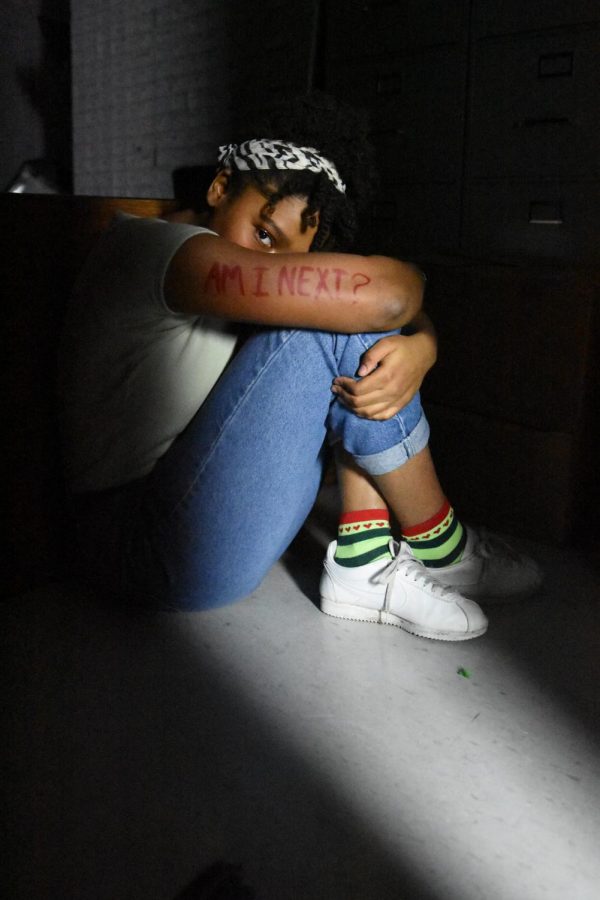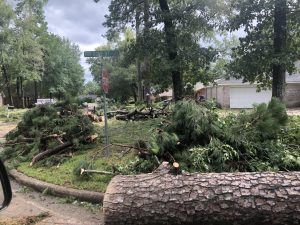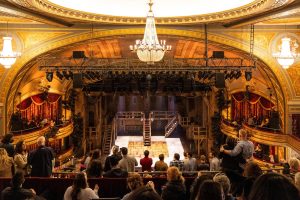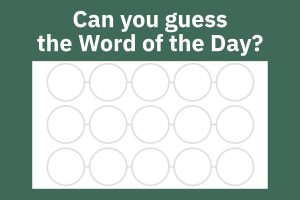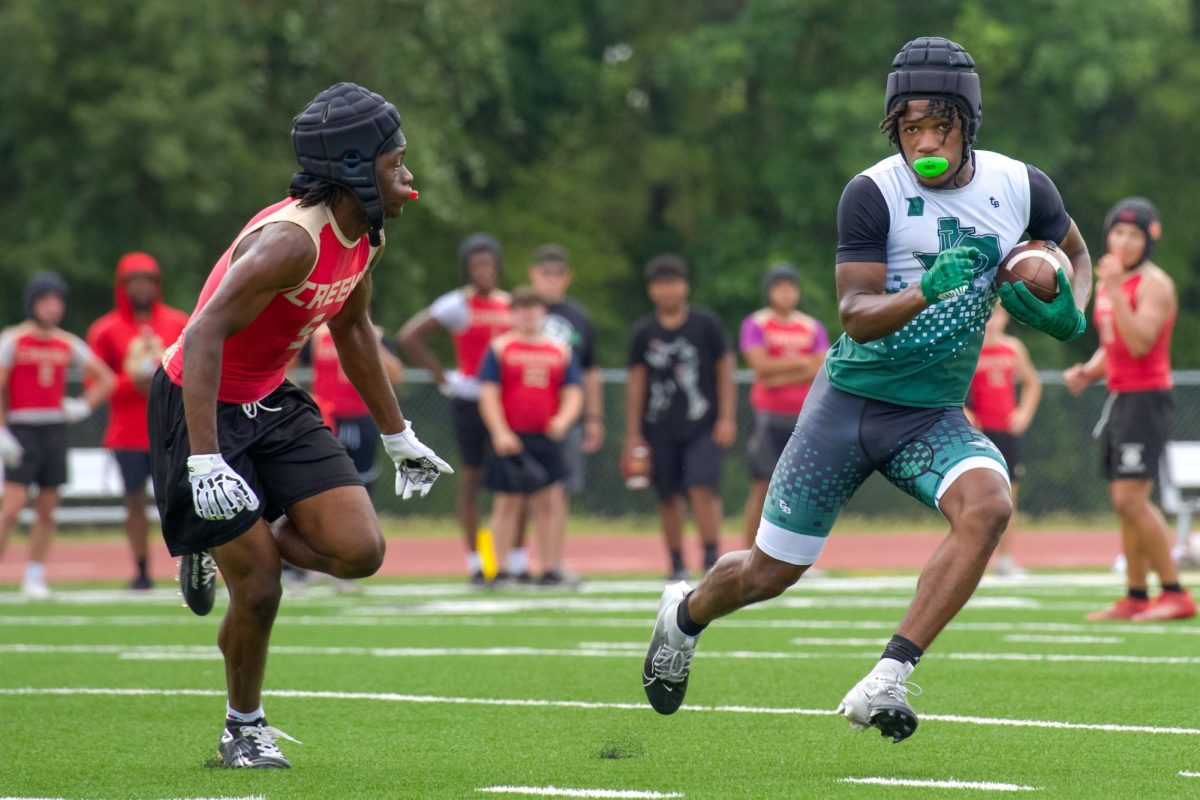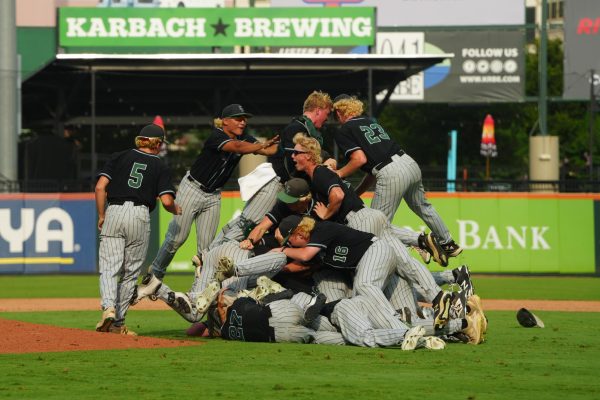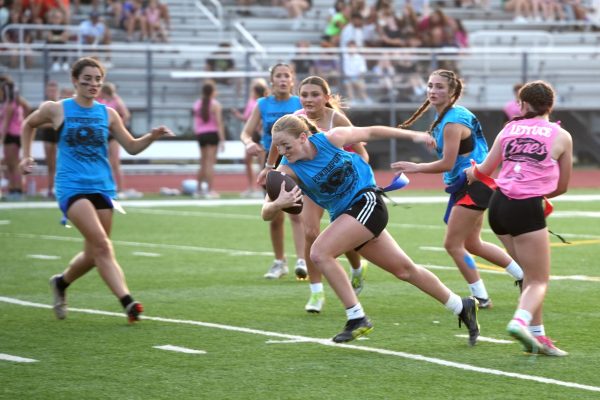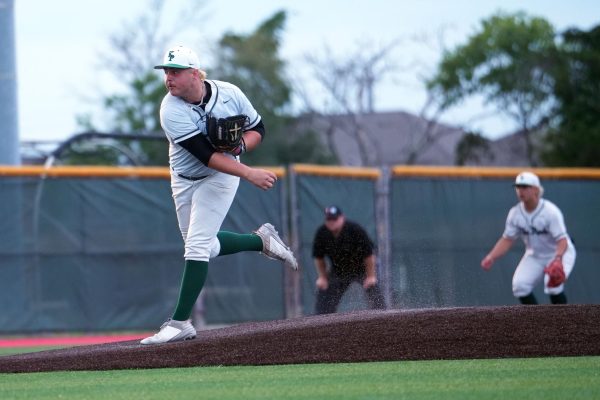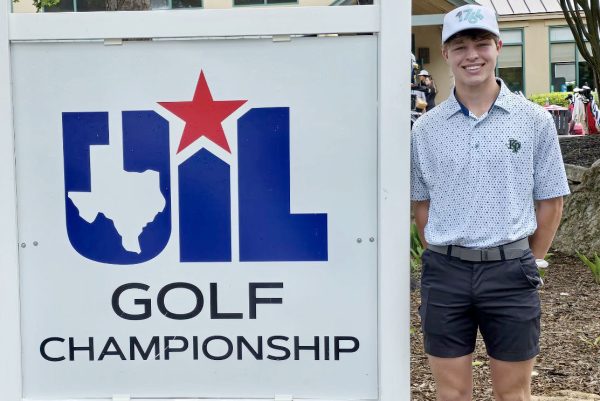School safety remains a stress
Lockdown drills and individual teacher plans are created to help lessen the stress on students who worry a school shooting could happen here.
With the rising number of school shootings each year and no foreseeable end to the violence, many students are left wondering “Am I Next?”
February 11, 2020
A glass breaking pen hangs by the window in English teacher Kimberly Villegas’ classroom. In the event of an active shooter, Villegas purchased this pen off Amazon and formulated a plan with her students. She even has her students practice moving furniture and arming themselves with objects around the room, while timing how long it takes for each class period to be prepared.
“We talk about where we would run, and how to use a blanket or sweater to cover the glass shards so we don’t cut ourselves trying to get out of the window,” Villegas said.
Precautions like these are nothing new for Villegas. She said that she attended a much rougher high school than Kingwood Park, where there were a number of stabbings, bomb threats and gang fights.
“For me, personally, I actually take a lot of comfort from the continued conversations and trainings we have here at KPark about our plans in the event of an active shooter,” Villegas said. “Lack of planning and lack of practice implementing the plan is the biggest factor in people not surviving catastrophes.”
On Feb. 14, 2018, a gunman opened fire at Marjory Stoneman Douglas High School in Parkland, Florida. 17 lives were lost, 17 others were left injured, and students and teachers across the country were left to question their safety at school.
Physics teacher Glenn Taylor was teaching his fourth year at Kingwood Park when this tragedy took place. When he arrived at home that afternoon and heard the news, he said he was shocked and saddened that our society had gotten to such a point. However, he said he never reconsidered his career as a teacher.
“[Teaching] is not my first career,” Taylor said. “After 21 years as an engineer, I chose teaching to give back to my community while changing the future through our students. I do not regret that choice and have no plans to change it.”
Taylor said that he believes the best way to prevent such a tragedy from occurring in schools is by building relationships. He said that teachers need to reach out to their students and build that relationship, allowing students an outlet if they need it for someone to talk to.
“Our job as teachers is to first help the student understand that we care about them, second to teach the content,” Taylor said. “Our students have baggage just like us adults. We can all use someone to share life with.”
Assistant Principal Gary Brain was teaching at Klein High School when the shooting in Parkland, Florida occurred. This is his first year working at Kingwood Park, however he said he believes that KPARK has a great culture where students trust their teachers, which contributes to its safety.
“I think the family atmosphere that I feel here is a big step to keeping our campus safe because if you feel like you belong I think you’re less likely to do something that wouldn’t be appropriate,” Brain said.
While ideally something like this would never take place, in the event of an active shooter KPARK has a safety plan in place titled Avoid, Deny, Defend. Avoid refers to getting out of the building, deny means that you’re doing what you can do to deny the intruder access to where you are, and defend means, if you had to, defend yourself.
“It’s not a step process, you don’t do them in order,” Brain said. “It’s not you avoid, then deny, then defend. It’s just the process of, depending on where you are and what the situation is, which one of the three things you would do.”
To further prioritize safety in school, teachers undergo training every year before school starts. They are instructed to lock their doors, cover classroom windows, and keep students hidden as much as possible in the event of an active shooter. They practice this throughout the year by drills and additional training. The app iHelp is also available for students to express any concerns anonymously.
“Listen and trust the adults that are here, we’ve been trained and we have your best interest in mind,” Brain said. “We will do what we can to keep you safe, that’s our job.”
Economics teacher Luke Gorney served as 1st Lieutenant of Armored Cavalry in the army for before he decided to become a teacher. He implements many lessons he learned in his 10 years in the army into his classroom today.
“I think I have always had a calling to teach the generation after me how blessed they are to live in the time that they live, and the country that they live,” Gorney said. “I feel that they are inundated with negativity and victimization doctrines that hinder their ability to dream and achieve.”
Gorney recalls feeling shocked after being informed of the shooting in Parkland, Florida on Valentine’s Day just two years ago. However as soon as this initial shock wore off, he said he started to analyze the strategies and decision making of authority figures, along with
questioning what educators teach, or do not teach, that lead our young people to believe life is meaningless.
“I follow district policy, but I also have hardened my classroom with existing structures and tools to defend the classroom and its occupants should that be necessary,” Gorney said.
He said that the first main change is attitude. First, he tries to imbue in all his students that they are precious and their life has meaning. Second, he changes the idea that in an active shooter situation, students are victims. He teaches them that they immediately become warriors and they all have the right to survive. Once that is done, in the case of an active shooter he creates a plan and a purpose with his students, so that they can stay calm and think, even when things get tense.
“If anything, [recent shootings] have reinforced my belief that competent and strong role models for children need to be there for the students to both prevent and handle such situations,” Gorney said.
It’s not fair to expect schools to 100% prevent school shootings said Villegas. However, such above and beyond efforts to prioritize safety in the classroom seen amongst educators such as Villegas, Taylor, Brain, and Gorney provide a great feeling of comfort to students in a society where concerns of safety are constantly growing.
“I don’t want to do anything different,” Brain said. “I love working with kids. It’s hard having to have that burden of thinking about safety all the time, but I wouldn’t want to do anything different. I want to see you guys be successful. The safety part, I can’t let that control what I do with my life.”


